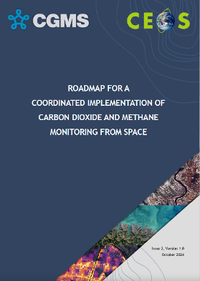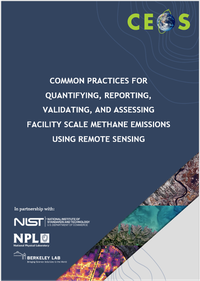20. Februar 2025
Space agencies meeting advances climate monitoring
Climate working group convenes at ESA ECSAT to coordinate on satellite architecture and data for climate monitoring
Leading space agencies and international organisations gathered at ESA’s UK-based ECSAT facility last week (11–13 February) to advance the role of satellites for climate monitoring. The meeting provided a forum to discuss and coordinate the global space-based architecture and data records needed to support climate policy and action for societal benefit.
The joint working group on climate, involving the Committee on Earth Observation Satellites (CEOS) and the Coordination Group for Meteorological Satellites (CGMS) gathered as part of regular on-going collaborative efforts of space agencies worldwide to produce satellite-based data records to support climate scientific needs and policy decision making.
Earth observation satellites are crucial to the global climate observing system, providing measurements for two-thirds of key climate variables.
Prominent topics addressed at the meeting included the latest advances in greenhouse gas (GHG) emissions monitoring and reporting, from global to facility scales, reflecting the valuable support Earth Observation provides owards the mitigation and adaption goals of the UNFCCC Paris Agreement.
Monitoring GHG – local to global scales
ESA’s Yasjka Meijer provided the latest progress towards an operational satellite constellation for global carbon dioxide and methane monitoring. Mapped out in the CEOS/CGMS GHG roadmap, specific advances relating to sensor technology, calibration, and data products were explored.
Two initiatives that support progress towards the Global Methane Pledge also had the floor.
Steven Hamburg of the Environmental Defense Fund showcased UNEP’s International Methane Emissions Observatory (IMEO) and how it is driving mitigation action across the fossil fuel, waste, and agriculture sectors. The IMEO leverages data and insight from operational satellites capable of detecting facility-scale methane leaks to facilitate cost-effective mitigation actions. In turn this helps limit near-term warming while also enhancing sites’ operational efficiency.
Emerging best practices for robust reporting facility-scale methane leaks from space, including their quantification, validation, and assessment, were presented by Paul Green from the UK’s National Physical Laboratory.
Global stocktake – lessons learned
Heather Maseko from the UNFCCC highlighted lessons learned and opportunities for the Earth observation community to support the UN’s second Global Stocktake, set to conclude in 2029. She emphasised the potential satellite data offers in monitoring the effectiveness of climate actions globally and locally.
She says, “countries have set expectations and targets following the first global stocktake. Space observations have an opportunity to provide the comprehensive and accurate information required to monitor and validate the effectiveness of climate action.”
Bridging global and national reporting
Researchers from the ESA-funded RECCAP-2 project presented a novel scientific approach to improve the accuracy of nationally compiled greenhouse gas inventories. The project developed a framework to compare national carbon emissions and removals against satellite observations, enhancing transparency and trust in global climate progress tracking.
Although only larger countries have been assessed to date, the lead scientist, Prof Ciais explained to the climate working group that the approach has wider potential as more satellites capable of observations GHGs expands.
“With the density of GHG sampling anticipated to increase, national inventories compilers will more accurately inform global policy and increase the effectiveness of decisions and finance used to mitigate and adapt to climate change,” explained Prof Ciais.
Monitoring Climate from Space
CEOS agencies and CGMS member organisations coordinate collaborative activities in climate monitoring to improve the systematic availability of Climate Data Records and coordinate the implementation and further development of space-based architecture for climate monitoring. The working group facilitates the implementation and exploitation of Essential Climate Variable time-series through coordinated efforts and strong collaboration with other CEOS Working Groups and Virtual Constellations.
The meeting concluded with a renewed commitment to engage national delegates and stakeholders on the benefits of Earth observation data to support global climate policy and action as the UNFCCC’s 30th Conference of the Parties in Brazil approaches.
View the meeting presentation slides.



